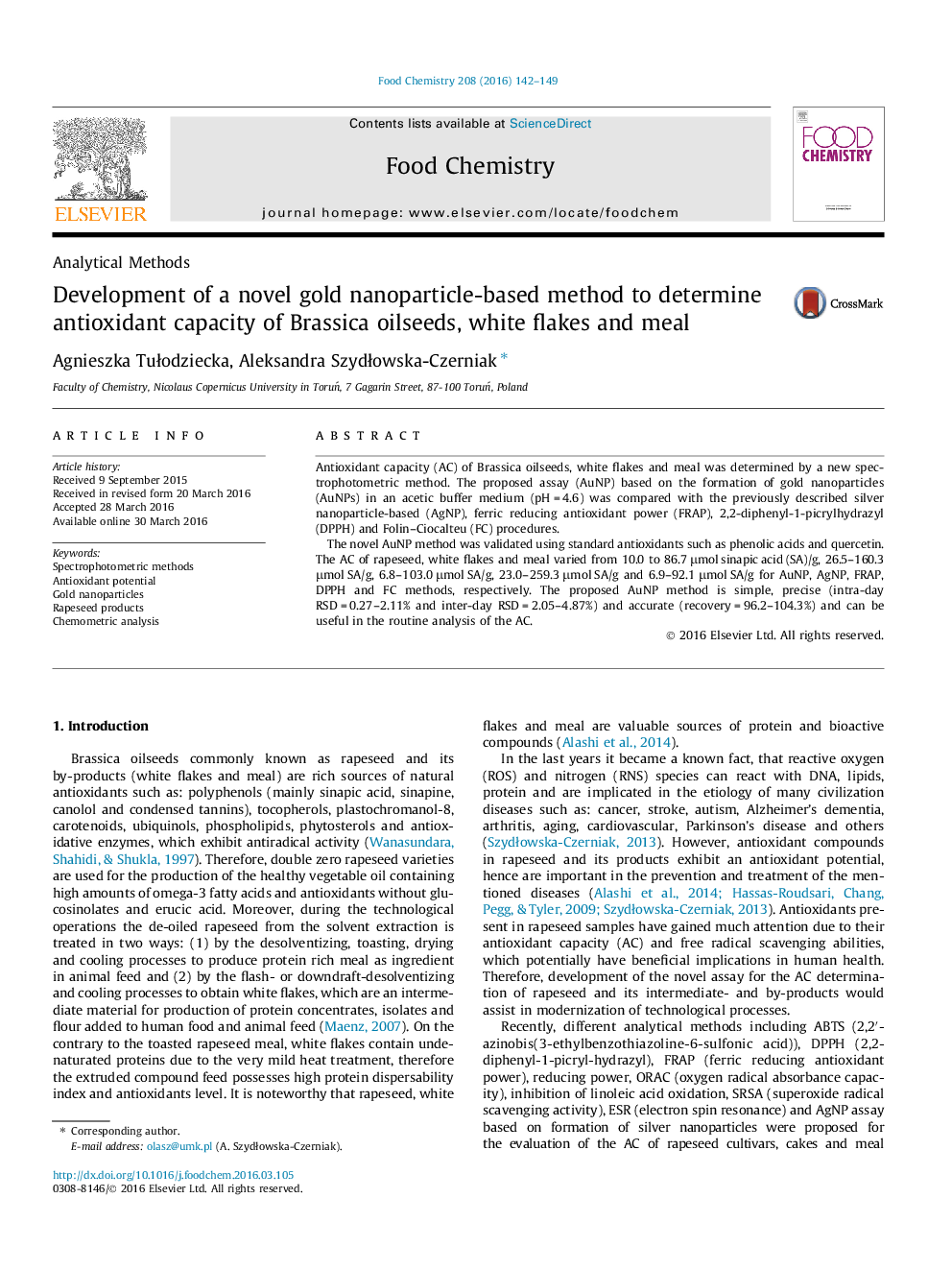| Article ID | Journal | Published Year | Pages | File Type |
|---|---|---|---|---|
| 1183954 | Food Chemistry | 2016 | 8 Pages |
•A new gold nanoparticle-based method was used for antioxidant capacity determination.•Precisions of the novel AuNP and AgNP, FRAP, DPPH and FC methods are comparable.•Gold nanoparticles were detected by microscopic methods.•Effect of solvent polarity on antioxidants level in rapeseed extracts was evaluated.•Antioxidant capacities of rapeseed extracts differ significantly.
Antioxidant capacity (AC) of Brassica oilseeds, white flakes and meal was determined by a new spectrophotometric method. The proposed assay (AuNP) based on the formation of gold nanoparticles (AuNPs) in an acetic buffer medium (pH = 4.6) was compared with the previously described silver nanoparticle-based (AgNP), ferric reducing antioxidant power (FRAP), 2,2-diphenyl-1-picrylhydrazyl (DPPH) and Folin–Ciocalteu (FC) procedures.The novel AuNP method was validated using standard antioxidants such as phenolic acids and quercetin. The AC of rapeseed, white flakes and meal varied from 10.0 to 86.7 μmol sinapic acid (SA)/g, 26.5–160.3 μmol SA/g, 6.8–103.0 μmol SA/g, 23.0–259.3 μmol SA/g and 6.9–92.1 μmol SA/g for AuNP, AgNP, FRAP, DPPH and FC methods, respectively. The proposed AuNP method is simple, precise (intra-day RSD = 0.27–2.11% and inter-day RSD = 2.05–4.87%) and accurate (recovery = 96.2–104.3%) and can be useful in the routine analysis of the AC.
